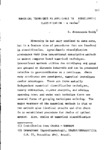Use este identificador para citar ou linkar para este item:
http://www.alice.cnptia.embrapa.br/alice/handle/doc/133002Registro completo de metadados
| Campo DC | Valor | Idioma |
|---|---|---|
| dc.contributor.author | REDDY, S. J. | pt_BR |
| dc.date.accessioned | 2012-09-19T01:01:08Z | - |
| dc.date.available | 2012-09-19T01:01:08Z | - |
| dc.date.created | 1996-09-05 | pt_BR |
| dc.date.issued | 1983 | pt_BR |
| dc.identifier.citation | In: CONGRESSO BRASILEIRO DE AGROMETEOROLOGIA, 3., 1983, Campinas. Resumos... Campinas: SBA: IA: SAAESP, 1983. | pt_BR |
| dc.identifier.uri | http://www.alice.cnptia.embrapa.br/alice/handle/doc/133002 | pt_BR |
| dc.description | Diversity in not only confined to data sets, but is a feature also of procedures that are involved in classification. Agroclimatic classification procedures vary from conventional descriptive methods to modern computer based numerical techniques. Conventional methods utilize few attributes and areas are grouped at discrete intervals and can be presented realtive to geo-coordinates as a continuum. Where many attributes are considered, numerical techniques confer advantages. There are three mutually independent numerical classification techniques, namely ordination, cluster analysis, and minimum spanning tree; and under each technique there are several forms of grouping techniques existing. The major weaknees of the numerical methods is that no two methods give identical results and also there is no established procedure for choice of optimal method. Also, choice of numerical classification procedure differs with the type odf data sets. In the case of numerical continuous data with both positive and negative values, the simple and least controvertical procedures are unweighted pair group method and weighted pair group method under clustering techniques with similarity metrics obtained either from Gower metric of standardized Euclidean metric. Where the number of attributes are large these could be reduced to fewer new attributes defines by the principal component or coordinates by ordination technique. These revised attributes are less affected by noise in the data set. However, the final results of numerical (...). | pt_BR |
| dc.language.iso | por | pt_BR |
| dc.rights | openAccess | pt_BR |
| dc.subject | Classificacao numerica | pt_BR |
| dc.subject | Numerical classification | pt_BR |
| dc.subject | Clmatologia | pt_BR |
| dc.title | Numerical techniques as applicable to agroclimatic classification - a review. | pt_BR |
| dc.type | Resumo em anais e proceedings | pt_BR |
| dc.date.updated | 2012-09-19T01:01:08Z | pt_BR |
| dc.subject.thesagro | Climatologia | pt_BR |
| dc.subject.nalthesaurus | climatology | pt_BR |
| dc.format.extent2 | p. 125-126. | pt_BR |
| riaa.ainfo.id | 133002 | pt_BR |
| riaa.ainfo.lastupdate | 2012-09-18 | pt_BR |
| dc.contributor.institution | S. JEEVANANDA REDDY, Consultor CPATSA. | pt_BR |
| Aparece nas coleções: | Resumo em anais de congresso (CPATSA)  | |
Arquivos associados a este item:
| Arquivo | Descrição | Tamanho | Formato | |
|---|---|---|---|---|
| Digitalizar0030.pdf | 56.38 kB | Adobe PDF |  Visualizar/Abrir |









